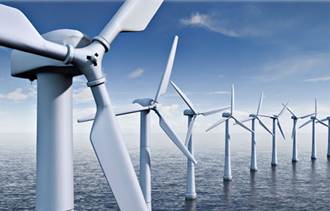

 Wind Turbine
Wind Turbine

 Wind Turbine
Wind Turbine home > Research > Research Area > Wind Turbine
home > Research > Research Area > Wind Turbine
-
연구주제 (Research Areas)
◆ Power Conversion Circuit Design and Control Algorithm for Electric Vehicles (EV) and Fuel Cell EV
◆ Power Conversion Applications : Electric Machine Drives (DC/BLDC/PMSM/IM) based on Microprocessors,
Design and Control of Power Converters (DC to DC, AC to DC, DC to AC, AC to AC)
◆ Power Electronics Circuits and Control, Interface for Distributed Generation Systems Using Renewable Energy Sources (Wind Turbines/Photovoltaic Arrays/Fuel Cells/Energy Storage Devices)
◆ Driving Circuits and Driving Methods of AC Plasma Display Panel (PDP) and Liquid Crystal Display (LCD)
풍력 발전(風力發電)은 풍력 터빈을 이용해서 바람(풍력)을 전력으로 바꾸는 일이다. 오늘날 풍력은 수많은 국가에서 상대적으로 값이 싼 재생 가능 에너지원을 제공하며 탄소가 거의 없는 전기를 생산한다.
2008년 말 기준으로 전 세계적으로 풍력 발전을 통해 총 121.2 기가 와트의 전력이 생산되었다. 이는 전체 전력 생산의 1.5%를 차지하는 양인데, 풍력 발전을 통한 전력 생산 비율은 매우 빠른 속도로 증가하고 있다. 2005년에서 2008년 사이의 3년간 풍력 발전을 통한 전력 생산량은 2배가 증가했다. 몇몇 국가에서는 풍력 발전을 통한 전기 생산 비율이 상대적으로 높은데, 2008년 기준으로 덴마크에서는 19%의 전력을 풍력 발전을 통해 생산하고 있고, 스페인과 포르투갈은 11%, 독일과 아일랜드는 7%의 전력을 풍력 발전을 이용해서 생산하고 있다. 2009년 5월 기준으로 총 80개 국가에서 상업적으로 풍력을 이용해서 전력을 생산하고 있다.
바람의 운동에너지를 기계에너지로 변환한 후 다시 전기에너지로 변환하는 풍력발전기는 약 20 ~ 40%의 발전 효율을 가지며, 근래에는 고효율, 저유지 비용 및 넓은 운전범위 등의 여러 장점을 갖는 가변속(Variable Speed) 구동의 우수성이 입증되면서 이중여자 유도발전기(DFIG, Doubly-Fed Induction Generator)와 영구자석 동기발전기(PMSG, Permanent Magnet Synchronous Generator)을 이용한 가변속 풍력발전기가 널리 사용되고 있다. 특히 가변속 PMSG를 이용한 풍력터빈은 소음과 신뢰성을 저하시키는 주요인인 증속기(Gear Box)를 제거한 직접구동(Direct-Driven) 방식이 가능한 형태로서 최근에는 이에 대한 연구가 집중되고 있다.
풍력은 풍부하고 재생가능하고 깨끗하며 온실 효과를 유발하지 않기 때문에 기존의 화석 연료를 대체하는 매력적인 에너지원으로 각광받고 있다. 그러나 풍력 발전단지 자체는 시각, 청각적인 거부감과 기타 다른 환경에 미치는 영향 때문에 항상 환영 받지는 못하고 있다. 따라서, 기술적인 어려움과 높은 비용에도 불구하고 해상풍력발전이 점차 인기를 끌고 있다.
< 출처 : http://ko.wikipedia.org/wiki/%ED%92%8D%EB%A0%A5_%EB%B0%9C%EC%A0%84 >

< 출처 : www.terrcon.org >
Wind power is the use of air flow through wind turbines to provide the mechanical power to turn electric generators. Wind power, as an alternative to burning fossil fuels, is plentiful, renewable, widely distributed, clean, produces no greenhouse gas emissions during operation, consumes no water, and uses little land. The net effects on the environment are far less problematic than those of nonrenewable power sources.
Wind farms consist of many individual wind turbines, which are connected to the electric power transmission network. Onshore wind is an inexpensive source of electric power, competitive with or in many places cheaper than coal or gas plants. Offshore wind is steadier and stronger than on land and offshore farms have less visual impact, but construction and maintenance costs are considerably higher. Small onshore wind farms can feed some energy into the grid or provide electric power to isolated off-grid locations.
Wind power gives variable power, which is very consistent from year to year but has significant variation over shorter time scales. It is therefore used in conjunction with other electric power sources to give a reliable supply. As the proportion of wind power in a region increases, a need to upgrade the grid and a lowered ability to supplant conventional production can occur. Power-management techniques such as having excess capacity, geographically distributed turbines, dispatchable sources, sufficient hydroelectric power, exporting and importing power to neighboring areas, or reducing demand when wind production is low, can in many cases overcome these problems. Weather forecasting permits the electric-power network to be readied for the predictable variations in production that occur.
In 2017, global wind power capacity expanded 10% to 539 GW. Yearly wind energy production grew 17% reaching 4.4% of worldwide electric power usage, and providing 11.6% of the electricity in the European Union. Denmark is the country with the highest penetration of wind power, with 43.4% of its consumed electricity from wind in 2017. At least 83 other countries around the world are using wind power to supply their electric power grids.
< Source : https://en.wikipedia.org/wiki/Wind_power >


